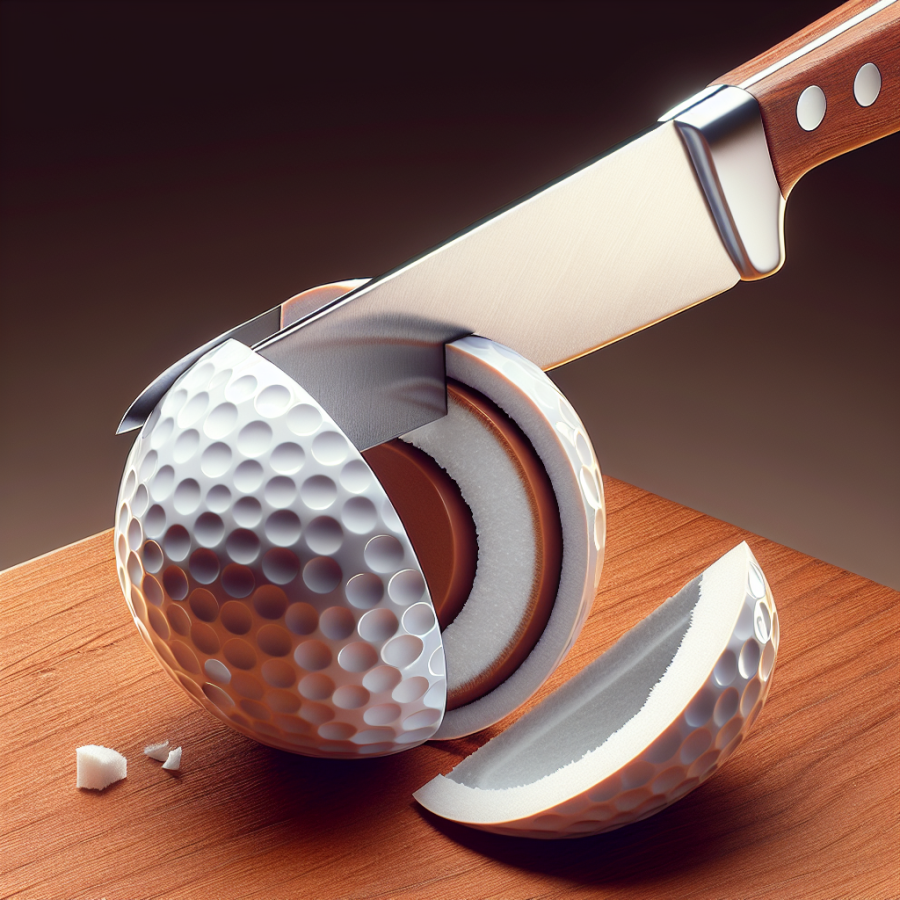Debunking the Falsehood: The Truth about the Interior of Golf Balls
The interior of golf balls has long been a subject of speculation and curiosity among both amateur and professional golfers. Many myths and misconceptions are doing rounds, the most prominent one suggesting that golf balls are hollow inside. This belief is entirely incorrect, as golf balls actually have a complex interior design.
The construction of a golf ball is essential to its performance. At the most basic level, golf balls consist of a core, usually made of rubber, and a cover, typically consisting of urethane or Surlyn. Some golf balls also include additional layers between the core and the cover to enhance speed, control, and spin. Each of these layers plays a significant role in determining the golf ball's flight characteristics.
Golf balls are not hollow; they have solid cores. The core is the engine of the golf ball, as it drives the ball's speed, lift, and spin. The materials used in the core vary among manufacturers, but the most common material is a high-energy rubber compound. This solid rubber core is then surrounded by layers of additional materials to enhance the golf balls' performance.
Contrary to the hollow myth, some golf balls actually contain liquid cores. This design is less common than the solid rubber core, but it does exist. These liquid cores are typically surrounded by a layer of rubber windings, which helps to contain the liquid and contribute to the ball's performance.
Moreover, many golf balls in today's market, particularly the premium models, are multi-layered. They feature a dual, triple, or even quadruple layer design. These additional layers, often constructed from various synthetic materials, provide better control and allow the ball to generate different spins based on the type of shot.
The exterior cover of the golf ball also plays a crucial role in debunking the hollow myth. The cover is responsible for the ball's feel and control, especially during shorter shots. Usually, urethane covers offer more spin and softer feel, while Surlyn covers provide more durability and distance.
In conclusion, the idea that golf balls are hollow inside is a clear misunderstanding. The detailed construction of a golf ball, featuring a core (either solid or liquid), multiple layers, and a cover, leaves no room for emptiness or hollow space. Golfers can rest assured that their golf balls, while lightweight and easily airborne, hold considerable engineering within their small structures.
Read also:
The Birth of the Beautiful Game: When Soccer was Invented
Understanding the Structure of a Golf Ball: Is it Really Hollow?
A golf ball can be a complex piece of craftsmanship, with painstaking attention invested into its design and construction. When we start breaking it down, you’ll notice that most of its intricacies lie beneath the outer shell. The popular myth that a golf ball is hollow is far from the truth.
To start with, what's visible to the naked eye when looking at a golf ball is its dimpled surface. These dimples, usually numbering somewhere between 300 to 500, are strategically embedded into the golf ball to reduce air drag and increase lift, enabling longer distance and straighter flight.
Peeling back the outer layer, we are faced with one or more layers inside a golf ball, depending upon its type and construction. Three common types of golf balls are one-piece, two-piece, and multi-layer balls.
Let's look further into the structure of each golf ball type:
1. One-Piece Golf Balls: The simplest of all golf ball constructions, a one-piece ball isn't hollow, but is made from a solid piece of Surlyn - a durable plastic material. They are soft and inexpensive, and thus often used on driving ranges.
2. Two-Piece Golf Balls: The most common type of golf ball among average golfers is a two-piece ball. These have a solid, hard core, generally made of a plastic or rubber compound. This core isn't hollow, but solid, surrounded by a thick cover that gives the ball exceptional distance.
3. Multi-Layer Golf Balls: These vary in complexity, containing up to 5 layers. The individual layers in these golf balls can be made of varied materials and serve different functions - none of them are hollow. For instance, the core could be rubber-based for speed, surrounded by a layer for spin control, another for distance, and then the cover.
Hence, understanding specific construction and components of a golf ball clearly helps debunk the myth that golf balls are hollow.
The layers within a golf ball each serve a distinct purpose, from the boost on initial impact, to controlling the spin rate, trajectory, and even 'feel'.
Finally, it goes without saying, the longer you play, the more you'll realise that the choice of a golf ball can make a considerable difference to your game. Even though golf balls seem simple on the outside, they have complex structures and components that have a significant impact on their performance. They aren't just solid or hollow - each layer and material counts.




